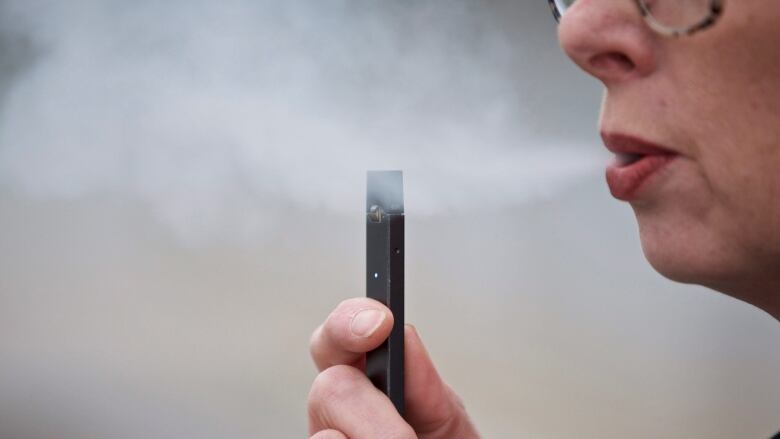New vaping advertising limits coming, but no further restrictions on nicotine yet
Proposed changes would include mandatory warning labels on products

With government figures showing a spike in the number of young people vaping,the federal government is preparingto place stricterlimitson advertisingand make health warnings on vaping products mandatory, CBC News has learned.
However, Ottawa is not yet readyto go as faras manyhealth advocateswantby further restricting theflavoured vape products known to appeal to younger users. It's also still considering whether to further limit the level of nicotine in vaping products. Under the Canada Consumer Product Safety Act, it is prohibited to sell vaping devices that contain 66 mg/g of nicotine or more because they have been deemed "very toxic" by regulators. Most products sold legally arebelow that threshold.
The government has been considering the moves since consultations began in February.
Proposed regulations includebanning advertising anywhere it can be seen or heard by youth, which includes public spaces,convenience stores and online.
They would also ban in-store displays of vaping products except for specialty stores that restrict entry to people 18 years or older.
Some brands already include health warnings on their products, but the proposed regulations would make it mandatory for all.
But that won't go far enough for some public health advocates. Earlier this fall, organizationsincluding the Canadian Medical Associationcalled on the government to go further. They want more limits on the number of flavoured products available, in an effort to make vaping less attractive to youth. They have also called for stricter limits on nicotine levels.
Dr. Andrew Pipe, a professor of medicine at the University of Ottawa and a clinician scientist insmoking cessationat the university's heart institute,welcomedthe federal initiative but saidmore needs to be done.
"I want to emphasize that the regulations that have been proposed have already been in place in Quebec, for instance, for some time and they've experienced the same rapid increase in vaping amongst young people as is being experienced all across Canada," Pipe said in an interview.
"Far from being a package of comprehensive regulations, this is just an initial attempt to address some of the more egregious marketing practices of the vaping industry."
Prime Minister Justin Trudeau was asked on CBC's Power & Politics what's holding his government back from moving further and faster on vaping.
"I think we need to leave room for proper science. We're a government that works on evidence-based decisions," Trudeau said.
A government official, speaking on background,said earlier that Health Canada still hopes to take action on flavours and nicotine levels in the new year. Officials are currently still debating the best way forward.
Youth vaping doubles
Health Canada has cracked down on shops selling illegal vaping products that defy current federal regulations. In 2019, the agency raided more than 3,000 vape shops, collecting more than 80,000 units of non-compliant vaping products.
The products seized include those that feature flavours advertised as"confectionery,"soft drinks or energy drinks, andproducts that exceed existing nicotine levels or include banned additives.
Under existing regulations, the government has restrictions on which ingredients can be put in a vaping product.
According to the government official, many of the vaping-related illnesses reported by people in recent months have come from users of vaping pods purchased on the illegalmarket. These products often include a vitamin E acetate additive, which the U.S.-basedCenters for Disease Control and Prevention has said is partly to blame for the recent spate of vaping-related illnesses.
All of this is happening as youth e-cigarette use skyrockets.
According to the government's figures, via theCanadian Student Tobacco, Alcohol and Drugs Survey, the number of students (grades 7-12) who say they have used an e-cigarette in the past 30 days has shot up to 20 per cent in2018-19 double the number from the previous year.
Health Canada said the changes will bepublished in Canada Gazette on Dec. 21, followed by 30 days ofpublic comments and consultation.
With files from CBC's John Paul Tasker












_(720p).jpg)


 OFFICIAL HD MUSIC VIDEO.jpg)
.jpg)



























































































